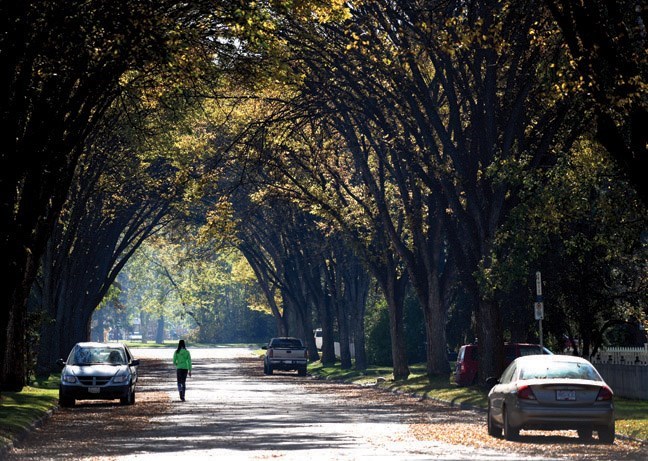The City of Prince George is hoping to expand the different species of trees it plants in the city to be both aesthetically pleasing and to ensure trees are much less vulnerable to pests and diseases.
At its meeting tomorrow night, city council will receive a report for information detailing the parks division's tree planting programs.
The city says the focus of the parks division’s tree planting projects recently has changed from reforestation of decimated large greenspaces to enhancing the city’s urban forest and street tree inventory by planting larger caliper shade trees that have an instant benefit.
Examples of this strategy are visible along major arterial roads like Tabor, Ospika and Foothills Boulevards as well as major parks like Rainbow, Connaught Hill, Duchess, Exhibition, Carrie Jane Grey, Riverside, Bravery, Veterans Plaza and Memorial Park Cemetery.
Each year the parks division plants a mixture of larger trees with a priority on replacing existing dead and vandalized street and boulevard trees in the downtown, Gateway and other major arterial roads.
In his report to city council director of civic operations, Blake McIntosh said that advance of the BC Summer Games, the parks division focused the bulk of 2022 new tree plantings along Del Laverdure Way in Carrie Jane Gray Park, and at other city facilities and venues hosting athletic competitions and visitors.
The capital budget for tree plantings in 2022 is set at $65,000 but residents can also donate a tree through the gifts and legacies program for $1,000, which provides people the opportunity to memorialize a loved one through planting a tree.
Tree donors are then able to select their favourite species from a pre-determined list of recommended ornamental boulevard trees and work with park staff on a preferred location for planting.
Prince George has a long history of urban forestry losses as the city suffered extensive damage to trees in the late 1990s during the mountain pine beetle devastation where tens of thousands of trees were lost within city limits.
The city responded in the summer of 2000 by announcing a partnership with the Tree Canada Foundation and Petro Canada to provide funding for both the purchase and planting of 40,000 trees.
Many community groups were involved in this reforestation process including local Beaver, Cubs and Scout troops as well as labour crews from Prince George Regional Corrections Centre.
The city then worked with community groups and youth organizations over a number of years to secure additional grant funding to replant areas affected by disease and subsequent wildfire fuel mitigation projects.
McIntosh said many of these areas are well on their way to becoming healthy green spaces again as the seedlings continue to grow and establish themselves and from a reforestation point of view, these projects should be considered a success.



.png;w=120;h=80;mode=crop)